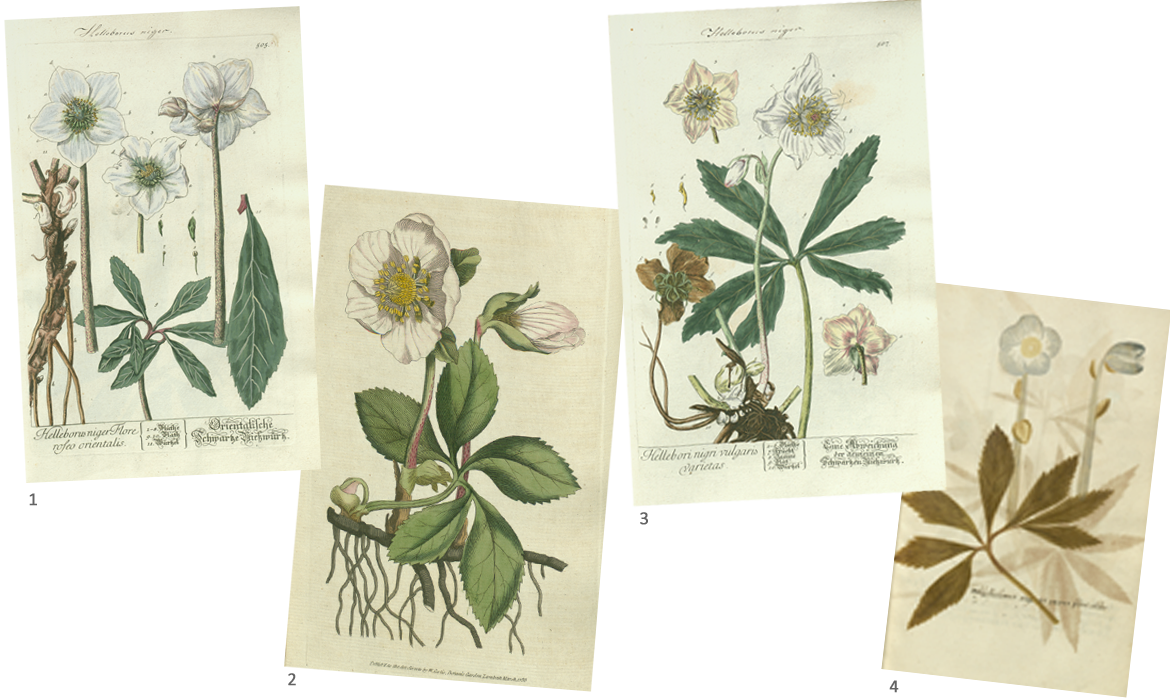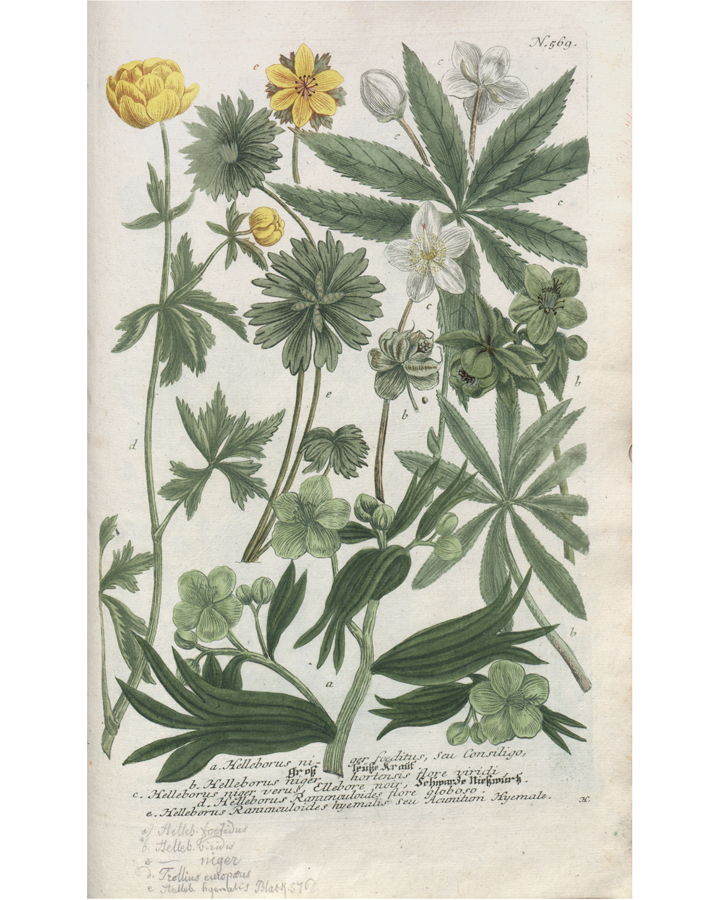Use from ancient times to the present day
The Christmas Rose was known even in ancient times and used for medicinal purposes. Hippocrates administered Helleborus as a laxative and diuretic. Helleborus was also considered to be a remedy against mental illness.
In the Middle Ages, the Christmas Rose was used as an ingredient in witches' ointments and considered to be an elixir for eternal youth. Ground to a fine powder and spread on the ground, it was even claimed to make people invisible. Because all parts of the plant are toxic, treating people with Christmas Rose was not without risk.
Today, only the roots of Helleborus niger are used in human medicines to treat cardiovascular problems. The primary ingredient is hellebrin, which is contained in the roots.
(Illustration: Verschiedene Arten der Hahnenfußgewächse, auch Helleborus, aus Phytanthoza-Iconographia, J. W. Weinmann, Regensburg, 1735 - 1745)


